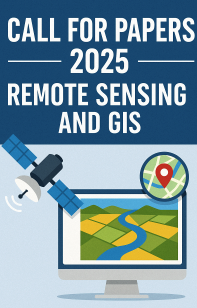Environmental-economic Approach to Analysis of Agriculture Land Suitability Using Spatial Modelling
Research Article- DOI: 10.23953/cloud.ijarsg.457
Abstract
Agriculture is a predominant factor economic and Gross Domestic Product (GDP) for any country. However, the agriculture land was changed into urban area and built-up land due to population growth and rapid urbanization. For last two decades, 25% of agriculture lands were converted into other purposes, which lift the economic value for land using and impact the ecosystem economic service value. While comprehensive and continuous valuation of identifying suitable economic and feasible agricultural land are vital for agriculture planning and maintain food security, they typically time consuming and exclusive field studies. We demonstrated using of spatial data to identify the suitable agricultural land integrating economic, physical, biological and chemical parameters. We identified the suitable and economical agriculture land during 2019-2020 in Thanjavur district in Cauvery delta protected agricultural zone. We used spatial analysis to understand the agriculture suitability land into three categories as highly suitable, moderately suitable and low suitable. Our study identifies 1027.2 sq.km areas of Peravurani, Thanjavur, Thiruvaiyaru, Papanasam, Thiruvidaimaruthur are highly suitable for pearl millet cultivation. The 754.12-sq.km areas of Orathanadu, near Thanjavur and near Pattukkottai are suitable for maize. The 1896.28-sq.km areas of Pattukkotai, Peravurani and the small portion of Thanjavur and Papanasam are suitable for sorghum cultivation. The 754.12-sq.km highly suitable areas of Thanjavur and near Orathanadu are suitable for rice cultivation. The 178.42 sq.km areas of Orathanadu are mainly high suitable for cotton. The 745.12-sq.km areas of Thanjavur and near Orathanadu are highly suitable for pulses. The 712.19-sq.km areas of Peravurani and Thanjavur are more suitable for sesame cultivation. Our results provide information to economist, agriculture planning department and urban planners for appropriate methodology to identity the agricultural land.
doi: https://doi.org/10.23953/cloud.ijarsg.457
Downloads
Published
How to Cite
Issue
Section
License
Copyright (c) 2021 International Journal of Advanced Remote Sensing and GIS

This work is licensed under a Creative Commons Attribution 4.0 International License.



